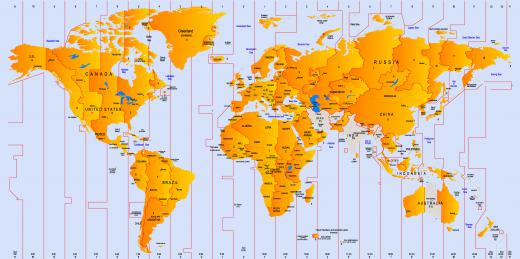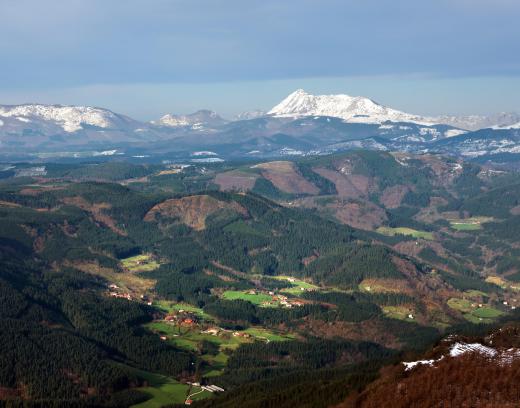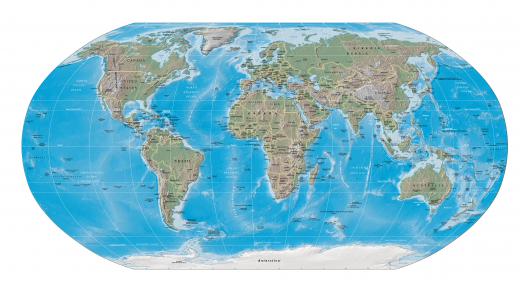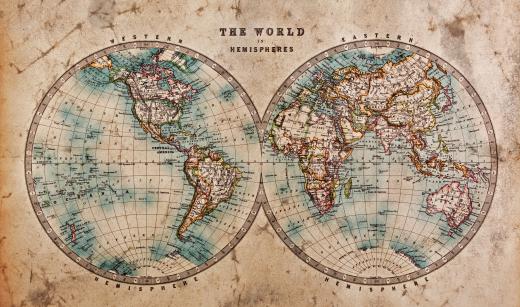What is Cartography?
 Mary McMahon
Mary McMahon
Cartography is the art and science of map making, practiced by cartographers. Humans have been drawing maps for thousands of years, as part of an effort to understand their environment. The quest for an accurate map drove explorers to adventure to far-flung areas well into the 1700s, and cartographers in the modern day find frequent employment still, thanks to constant political and geological changes around the world. To train in cartography, a student should be prepared to take years of courses in multiple disciplines.
The term comes from two Greek words, chartis, meaning map, and graphos, meaning to draw or write. In historic times, an individual cartographer hand drew a map in entirety, often with limited information. Modern practitioners of cartography have the advantage of computers and other equipment to assist them, making their maps more precise. The science of cartography has also evolved, as many maps have become multimedia data explosions, chock full of information for the reader.

Basic cartography covers two data components. The first is location data, indicating where the area being depicted is located. In ancient maps, location data often showed where something was in relation to something else, but modern maps usually use geographical coordinates such as latitude and longitude to orient their features. The second type of data is attributional data, showing bodies of water, mountains, valleys, hills, and other geographical features of interest and of note.

A map of the world reflects an immense mathematical and aesthetic challenge, that of translating the globe to a two dimensional surface. Many cartographers have struggled with this issue over the centuries, striving to project the features of the globe accurately and effectively. Numerous approaches have been taken to solve this problem, including the Mercator Projection, a map which distorts geological features north and south of the Equator in order to fit the globe into a neat rectangle. Other maps portray the globe in sections, reducing the amount of distortion necessary.

The skills needed for cartography are immense. Cartography relies heavily on math to represent the Earth, along with science to help describe and understand geological features. Specialized maps may include things like ocean soundings, which requires a knowledge of oceanography, or unique rock formations, which implies geological study of the region. Knowledge of ongoing political events is also important, as nations divide, change names, or disappear more frequently than many people realize.

The products of cartography can be divided into two rough types of map, although they may frequently overlap. A topographical map is one which is designed to be true to the landscape that it is depicting. Topographical maps usually include elevations, major geographical features, and other information which someone who use to orient him or herself. These maps can often be used for decades, unless a major geological event such as a volcanic eruption or earthquake occurs.
A topological map, on the other hand, is used for conveying information such as highway routes, dangerous regions of a country, or population density. Topological maps can sometimes be quite complex, showing multiple important features to readers to highlight and educate, and they change frequently as the lives of the people and places depicted on them change.
AS FEATURED ON:
AS FEATURED ON:














Discussion Comments
A globe allows a more accurate map. Then one can see that a "great circle" is the shortest distance between two points. That is why one would fly over Alaska (Aleutians) when going from Chicago to Tokyo. Also explains why the distant warning (DEW)line (to detect USSR missiles) is in Alaska and Canada.
what is the general time interval for preparing the topographic and topological sheets?
Post your comments